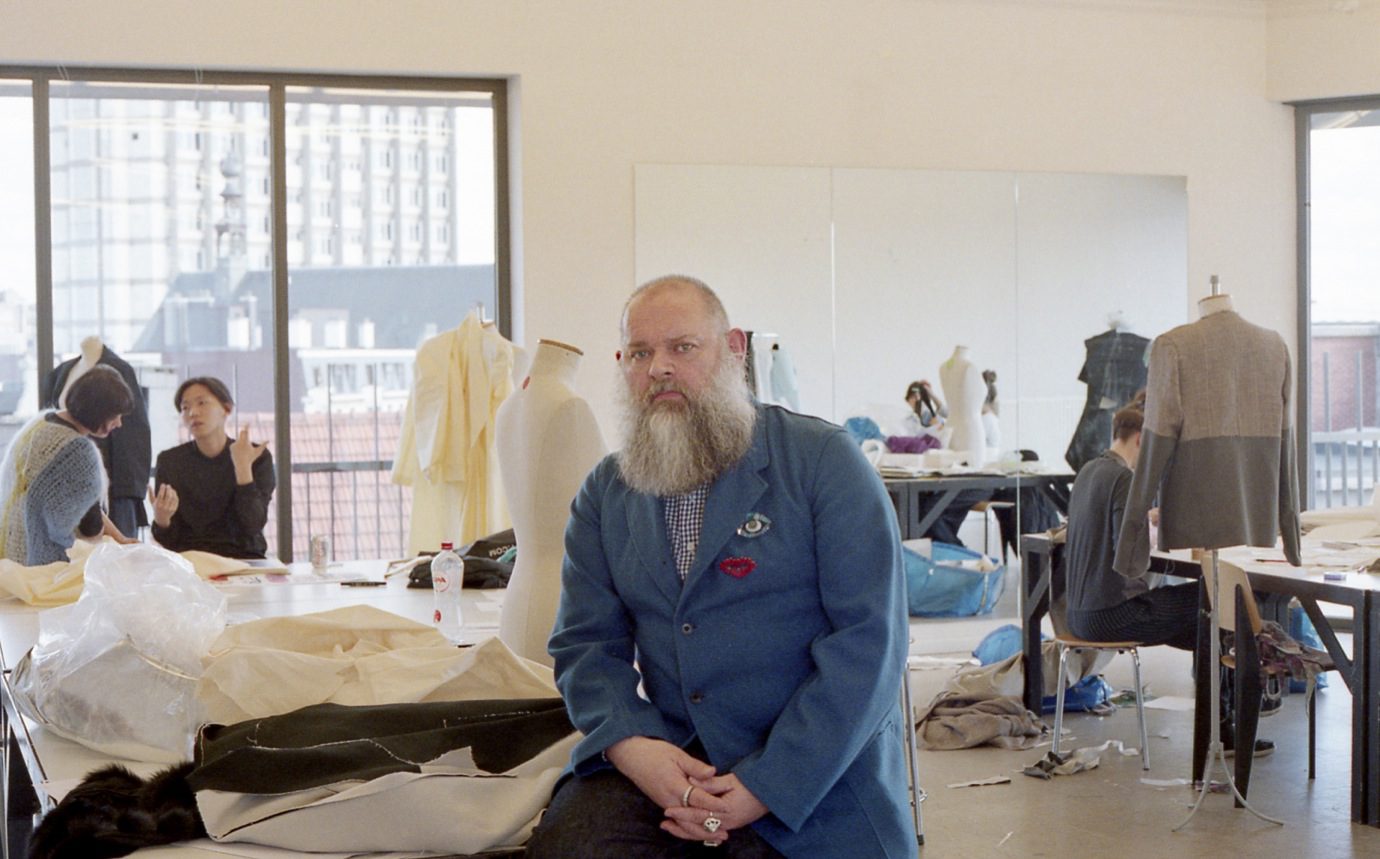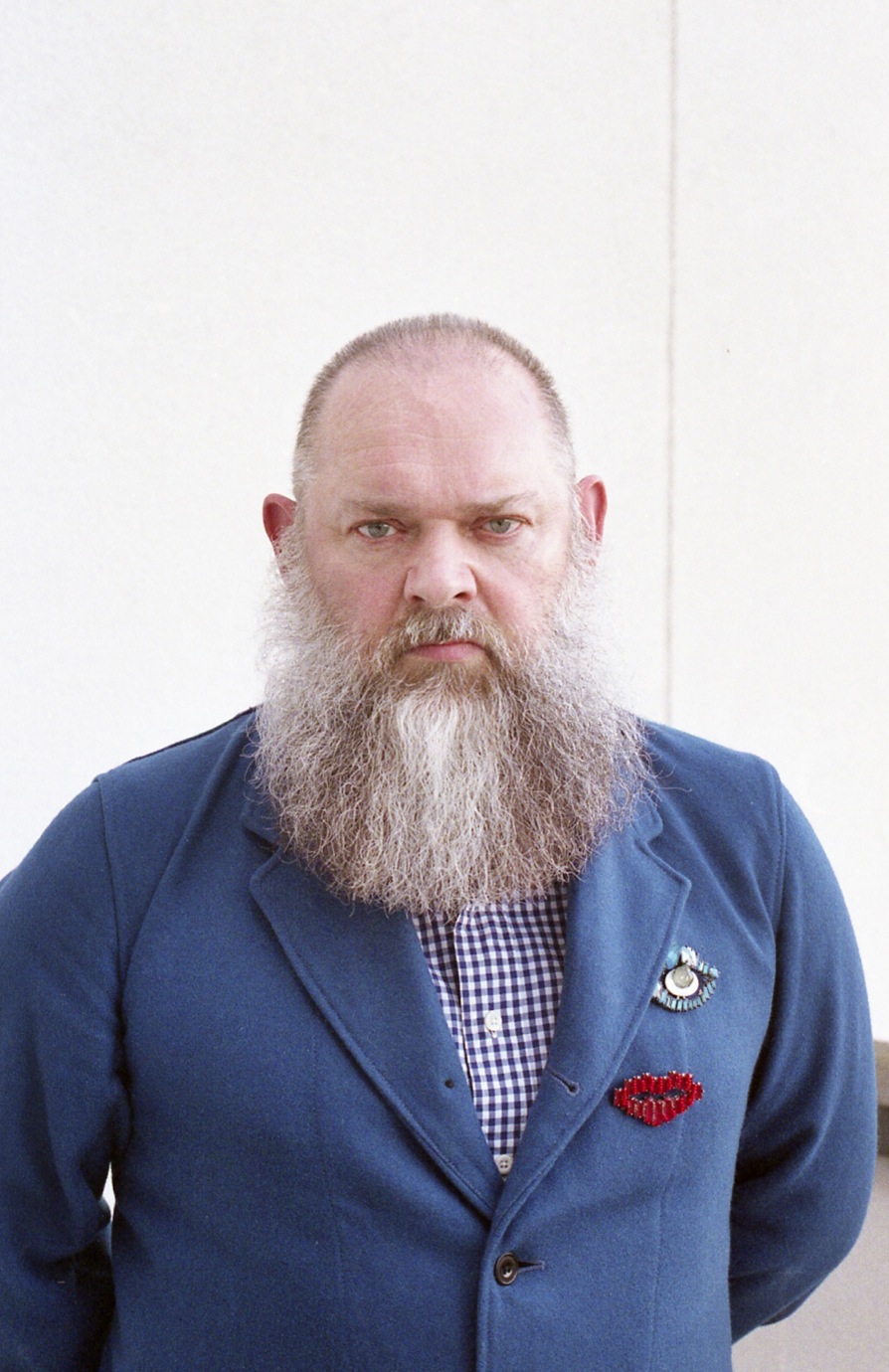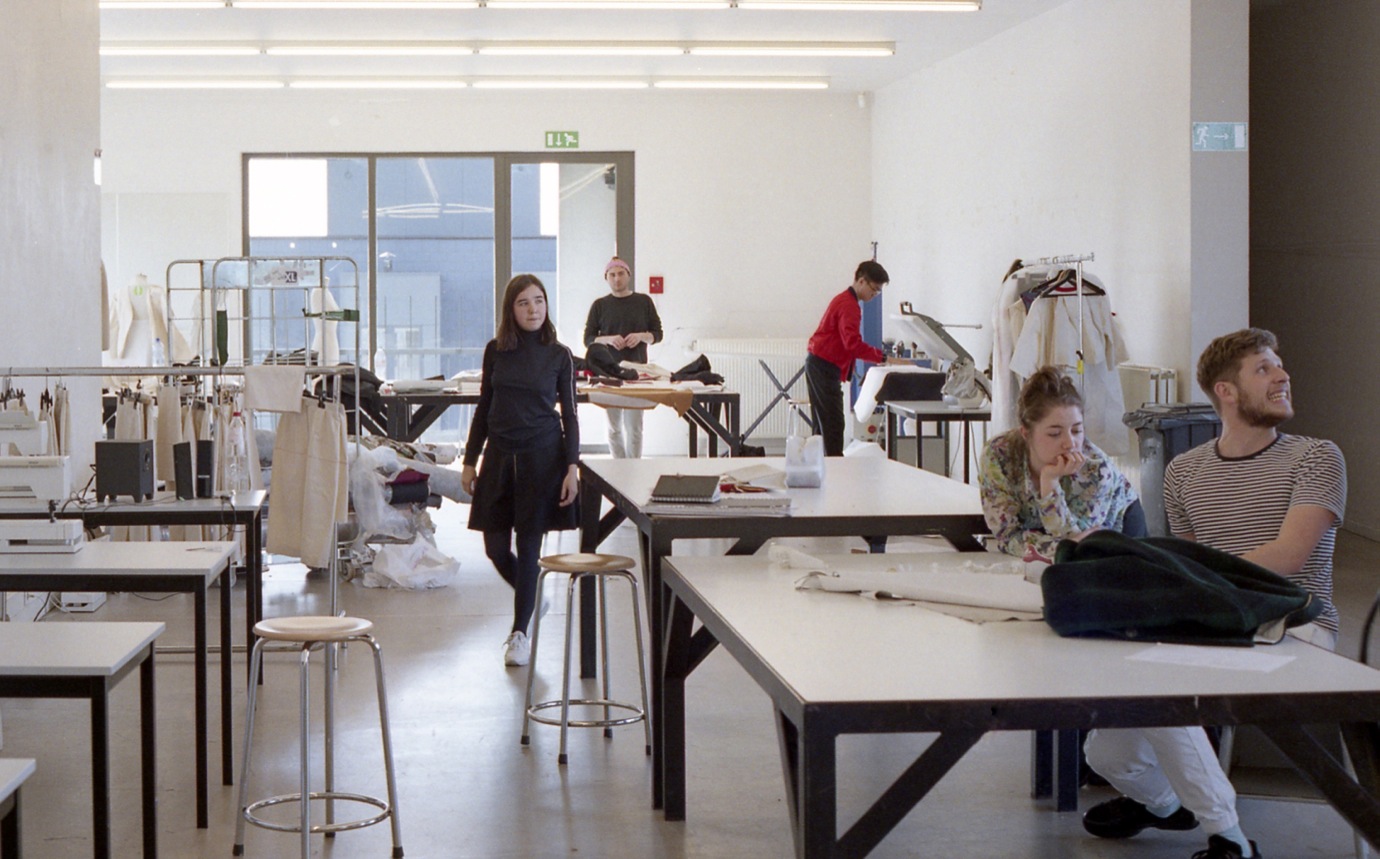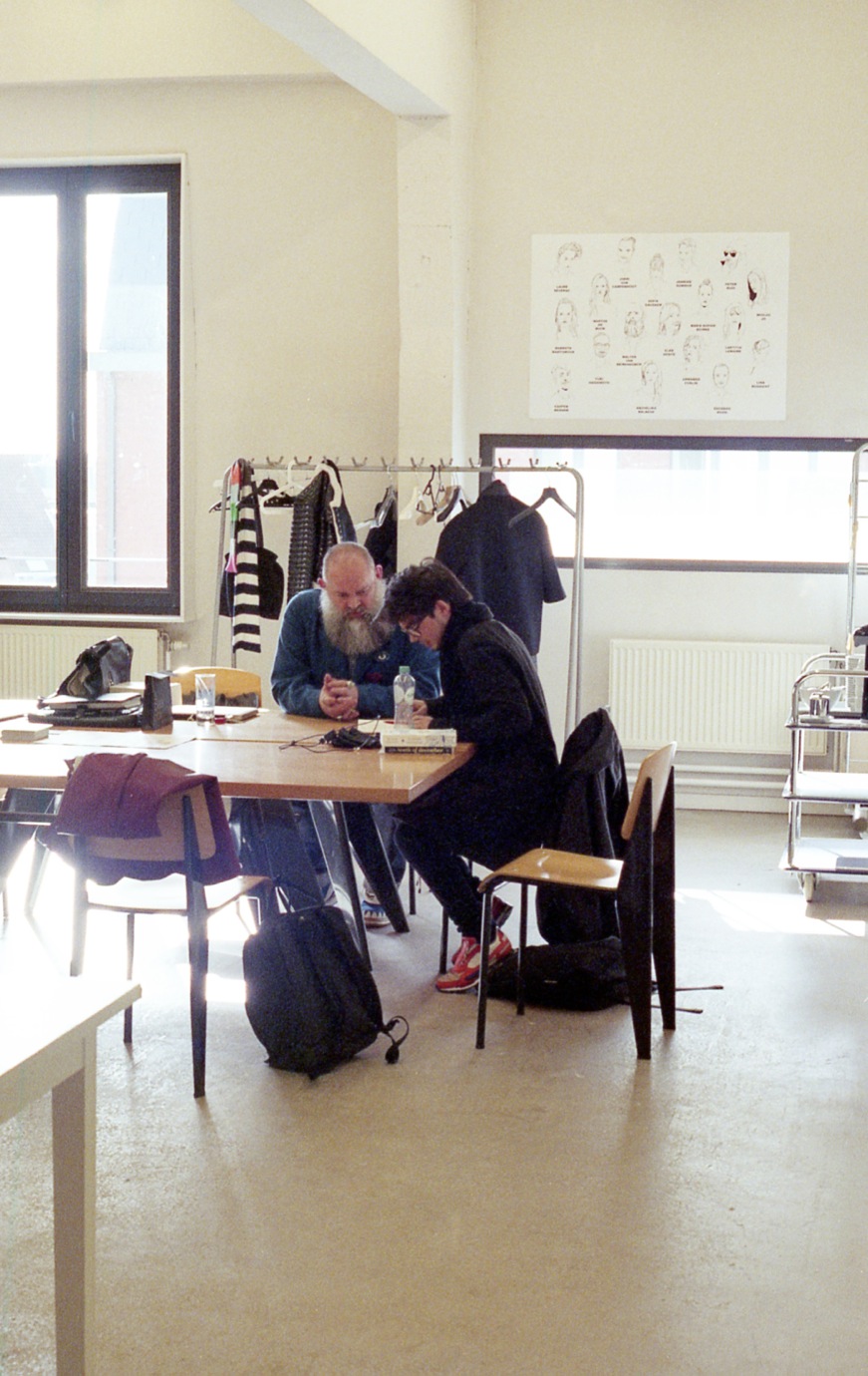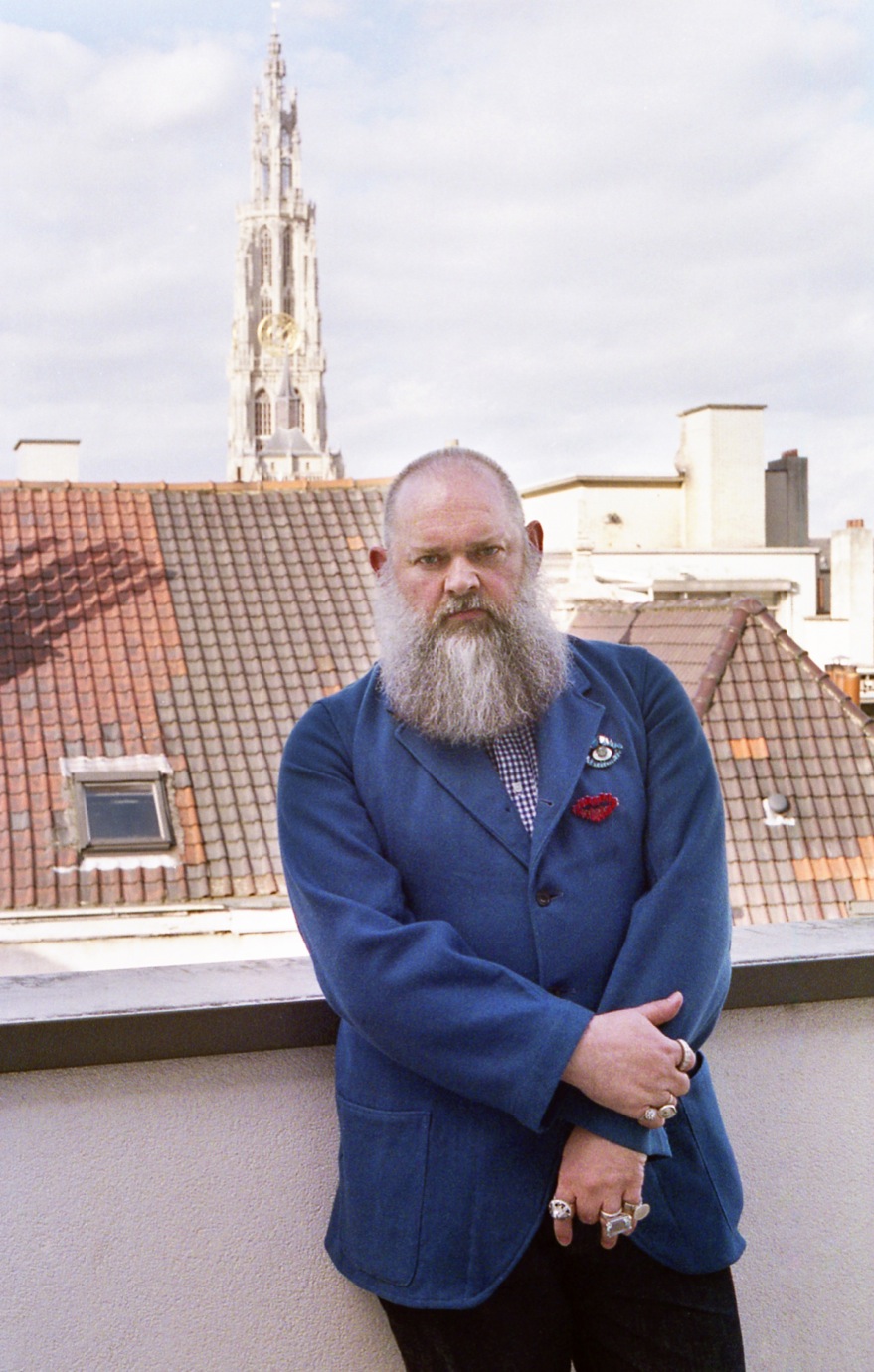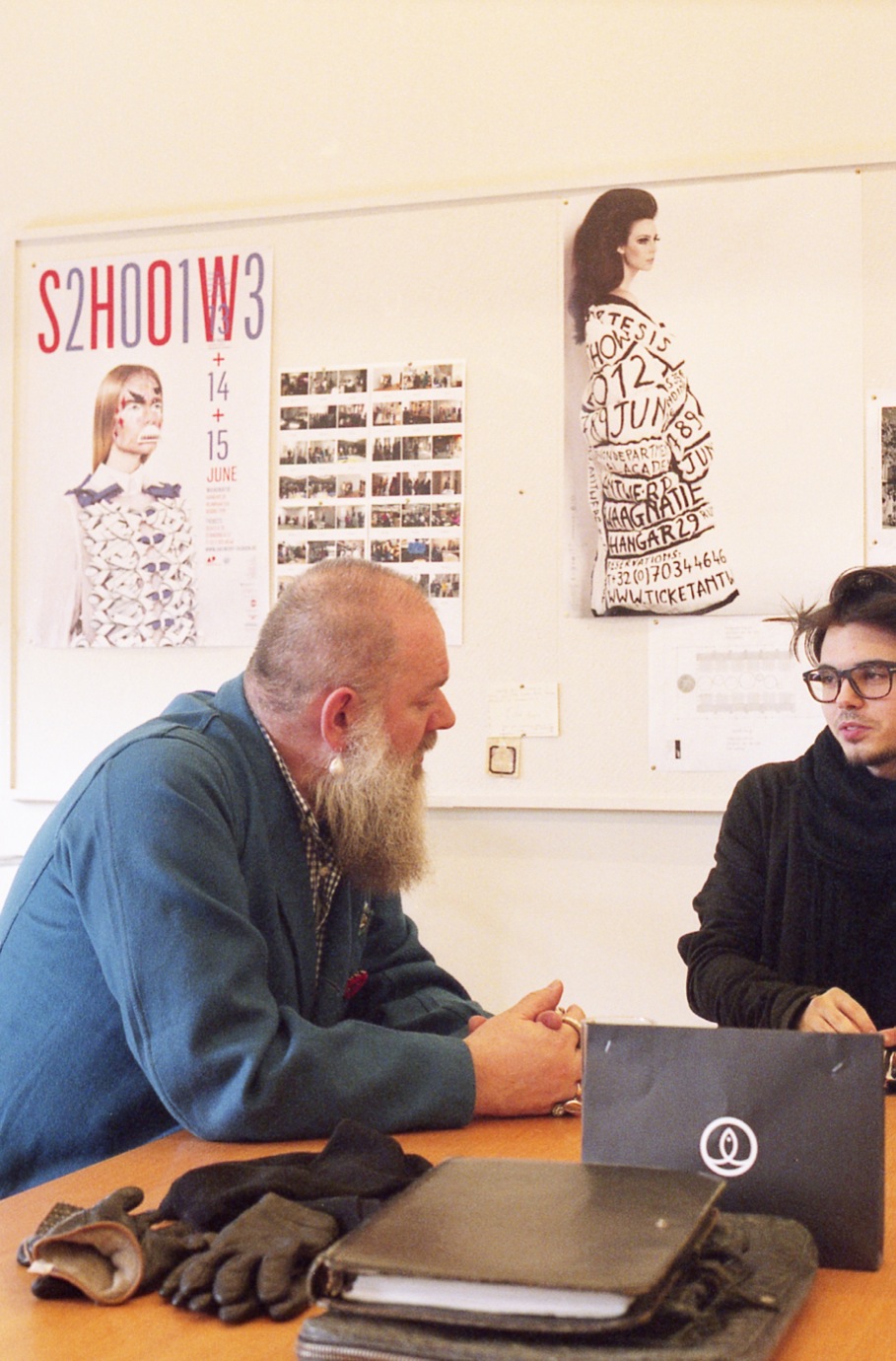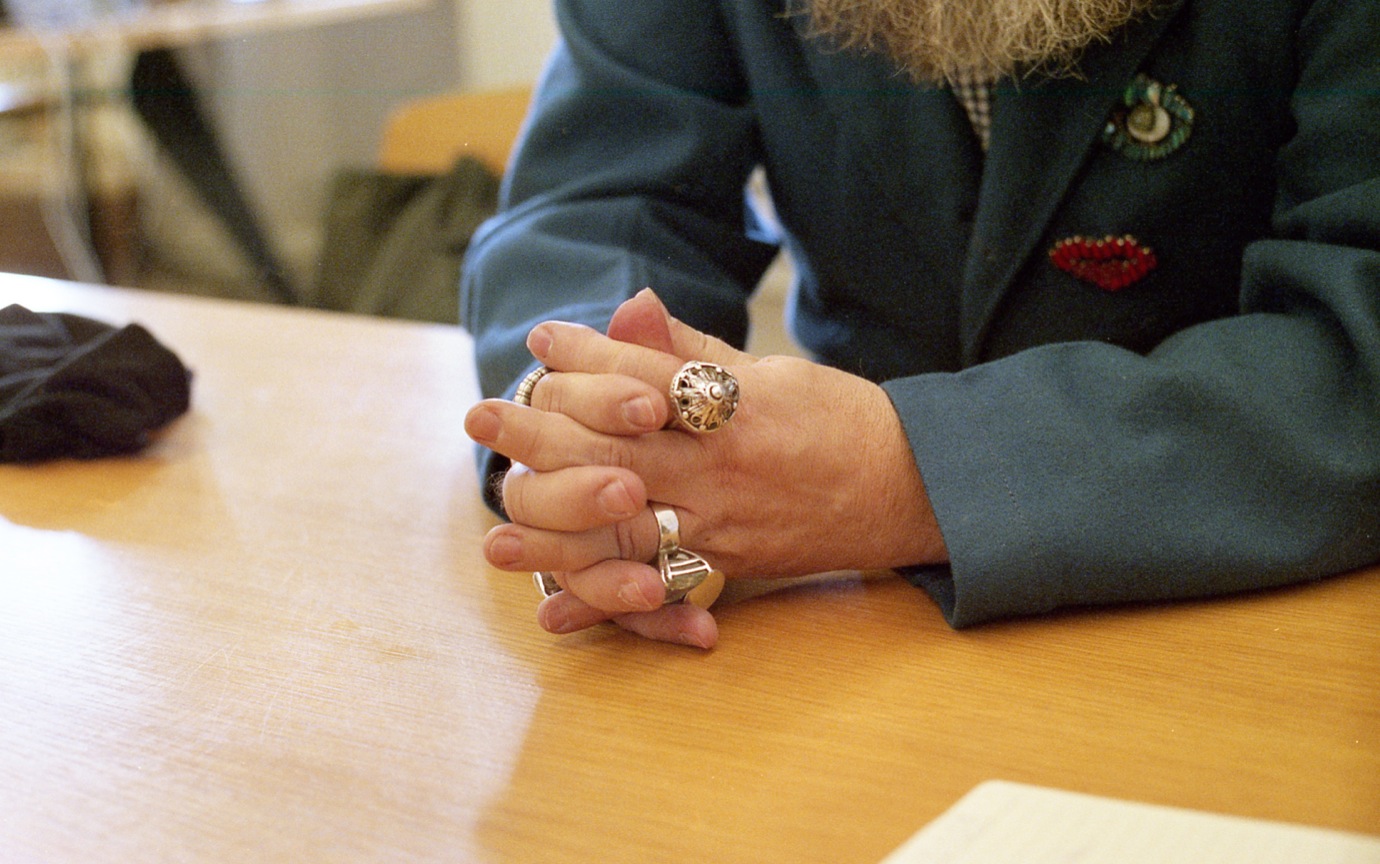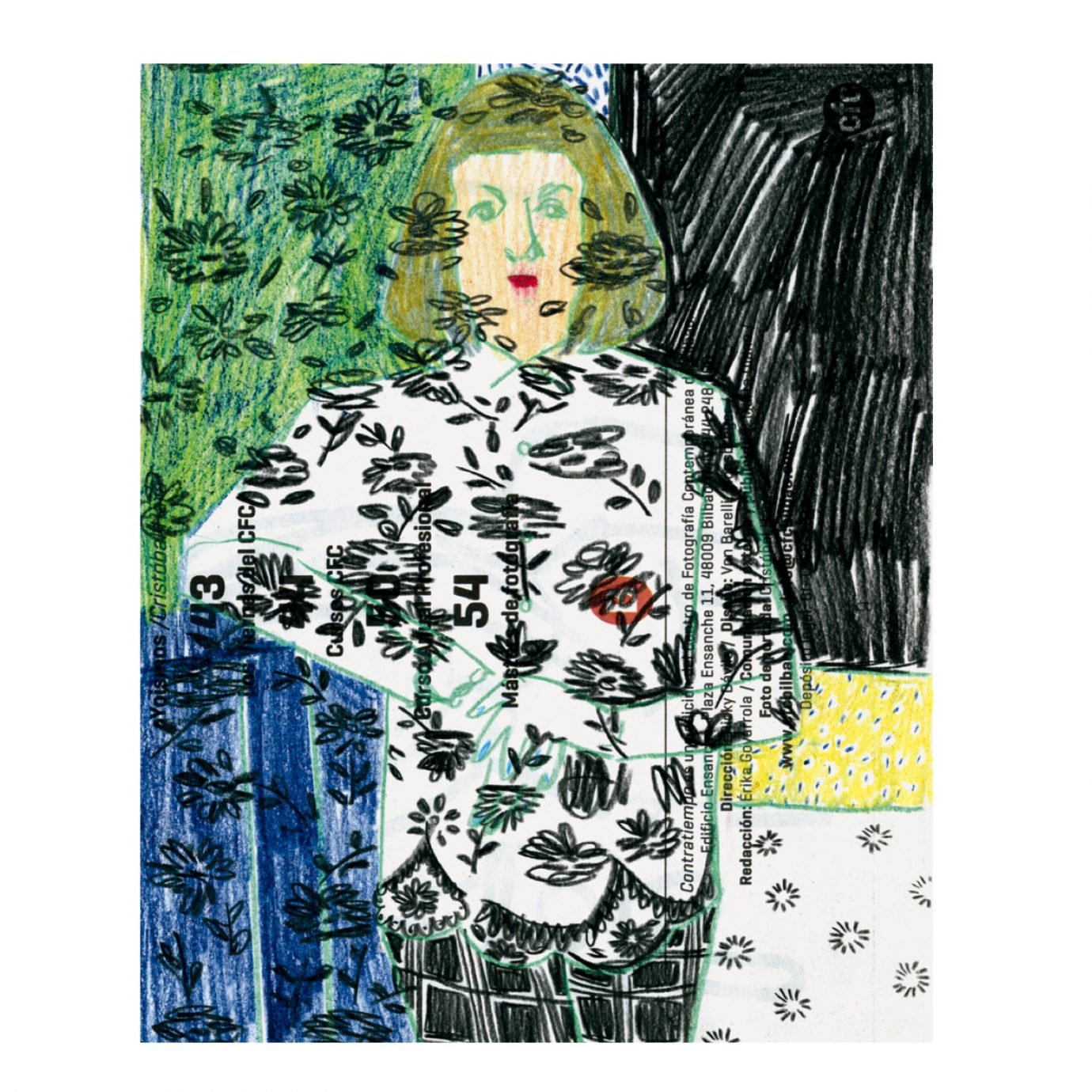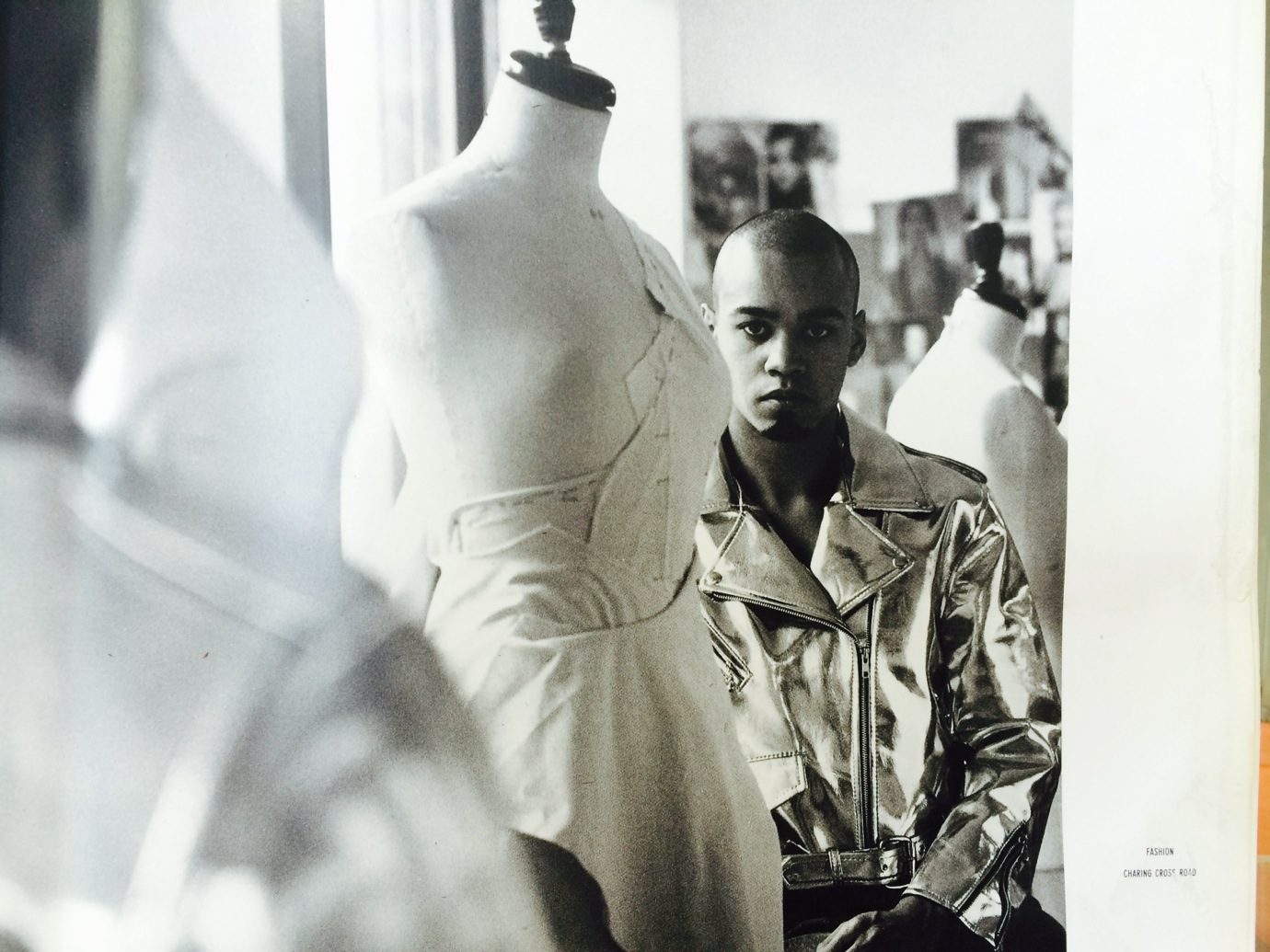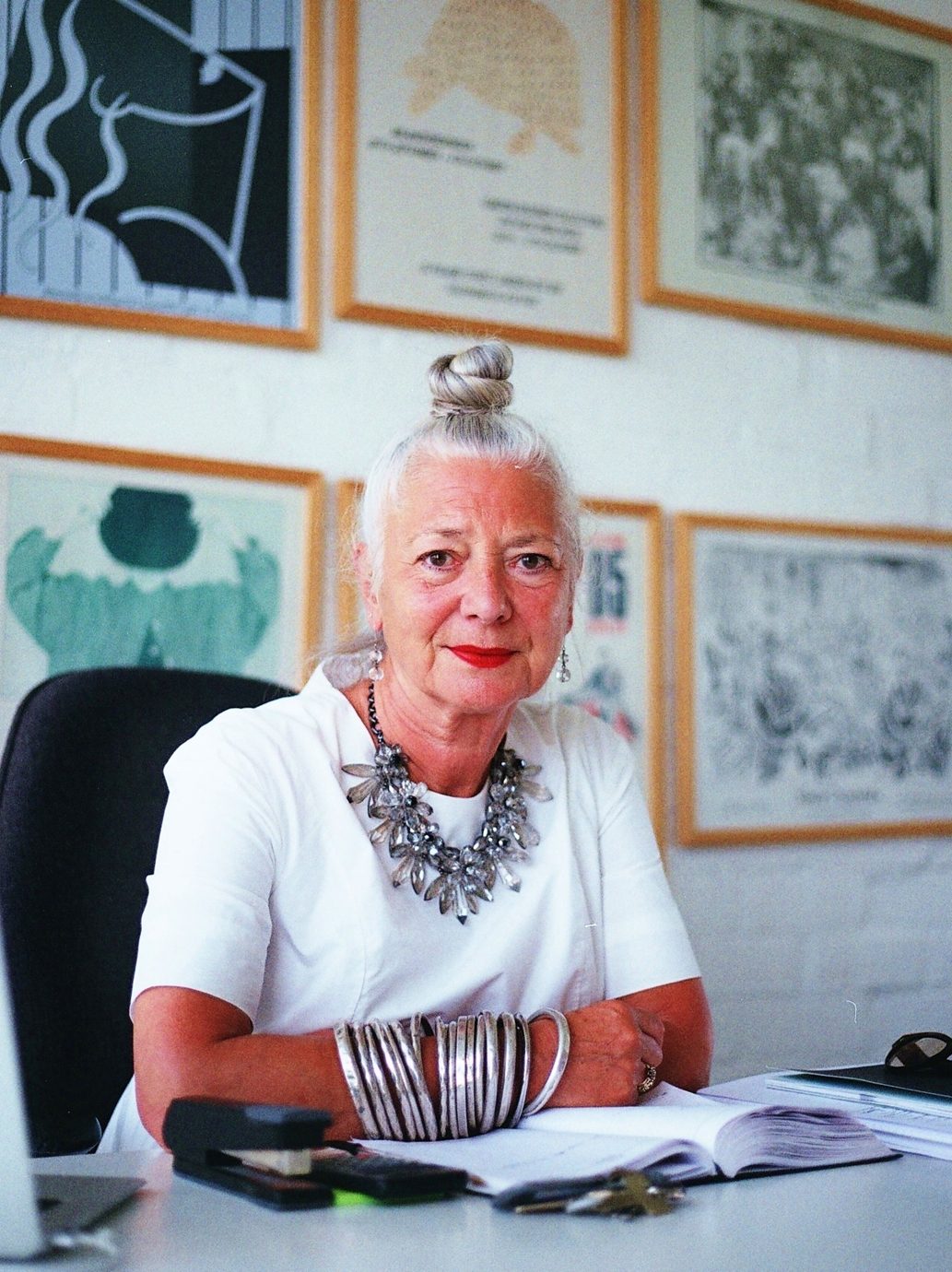Was that taught to you while you were a student at the academy?
That was something I learned by myself. When we studied here times were different. It was mainly due to our own ambition and our own exploration, especially just the group motivating itself, that we went to fashion weeks all over the world.
It’s a sort of synergy.
Exactly! There was no sense of competition or envy. For example, Ann was good at presentations so Dries wanted to improve his. That’s how it went. It was very friendly, we were always working together.
Can you spark that with your students?
Some years you do, some you don’t. It has to happen organically. For us it’s most important that students have their own voices. Some years you see that the students stick together, but sometimes they split up in smaller groups. We can’t package them.
I heard that some students here have their own interns. What’s that about?
That started with the Asian students. I don’t know why. I’ve never seen European students work this way. These interns are mostly people who can’t get in here. They want to gain more experience before reapplying.
I would feel upset as a hardworking student who can’t afford interns.
You shouldn’t be, we usually don’t know about these interns – it’s not like students take them to school. We judge your work as it is.
Perhaps those students deserve some slack too, managing people isn’t an easy job.
Perhaps, but we shouldn’t get caught up in these anomalies. It feels gossipy.
Craig Green worked with you and you’ve been quoted as saying that you taught him to voice himself. How do you get that out of people?
It happens naturally. People come to work here and find their voice, the same goes for Bernard Wilhelm. I think it’s due to the environment. We have a small team and lack much luxury; there isn’t an abundance of computers or machines. It’s a huge experience to not be overwhelmed by those in the fashion world, where money is so common. We prove that with creativity and believe, something is possible that can’t be purchased.
His graduate collection was incredibly controversial. Something you have been known for yourself. How much does your voice equal that of Craig Green? Or even your students?
My strong imagination really prevents me from being influenced. I try to view stuff from the student’s perspective as much as possible. At other schools teachers seem more dominant, like Vivienne Westwood: she makes little Westwoods all the time. With all due respect, because dominance isn’t easy to maintain, but that’s not how we do things here.
“WE’RE AT A TURNING POINT IN FASHION WHERE THE OLD WAYS AREN’T FUNCTIONING ANY MORE, BUT THE NEW ONES AREN’T EITHER.”
But students still cry from time to time here, don’t they?
It’s only natural. Tears usually prove that there’s an acknowledgement, an understanding of something. If I see a student’s work is not there yet I demand more effort, research and work. They might cry in the process, but that’s nothing horrible.
Any WvB collection always seems to have a certain amount of provocation. Depictions of the phallus return often in your work. Do you ever back down?
But wait, I never think about shocking people. It’s more a problem for those who are shocked than it is for me. If I think I should show something… I do it.

